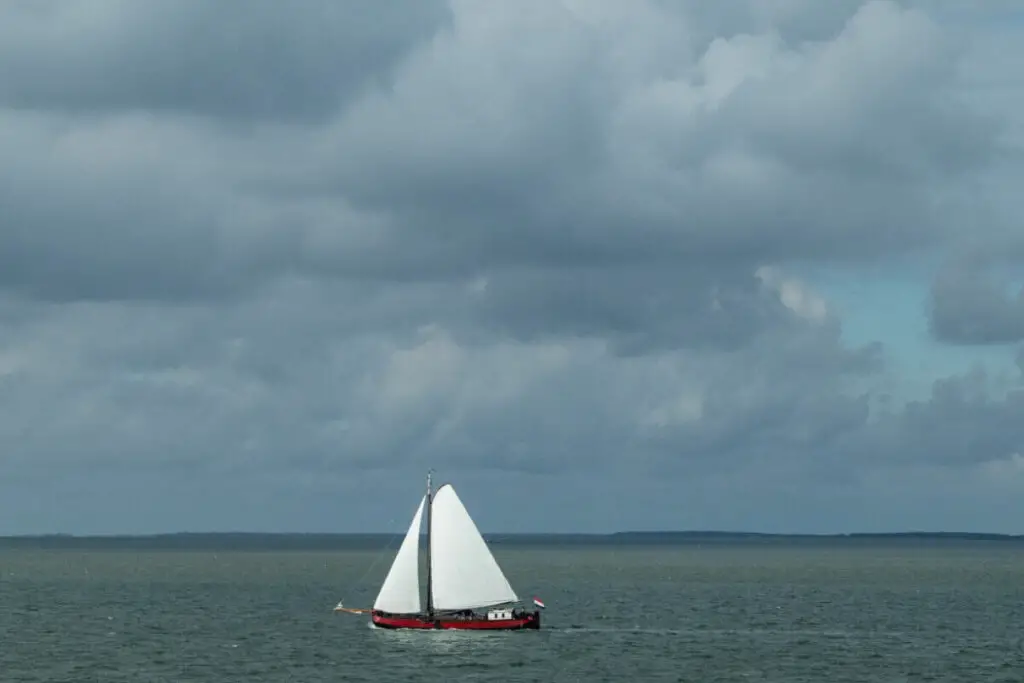Sailing is a captivating and adventurous activity that has been practiced for centuries. It is a sport that I enjoy.
When sailing, the wind, a vital component of sailing, propels a boat forward, making wind awareness a critical skill for any sailor. Read on as we will delve into the significance of wind in sailing, exploring how it affects the movement of boats, alters sailing strategies, and why understanding wind patterns is essential for safe navigation.
Table of Contents
- Wind Awareness: One Of The Most Important Things You Need To Understand When Sailing
- The Role Of Wind Is Essential To Understand When Sailing
- Related Questions
Wind Awareness: One Of The Most Important Things You Need To Understand When Sailing
When embarking on a sailing journey, the wind takes center stage as the driving force propels a boat forward. As such, wind awareness becomes a crucial skill for every sailor.
Read on as we will delve deep into the profound significance of wind in sailing. We will explore how it intricately influences the movement of boats, shapes sailing strategies, and emphasizes the essential nature of understanding wind patterns for ensuring safe navigation.
Additionally, we will examine various wind indicators, such as the mooring area, waves, and birds, which can provide valuable information about wind direction.
So, join us as we unravel the pivotal role of wind in sailing and uncover why a thorough comprehension of its dynamics is an absolute necessity.
The Sail Boat Does Not Move Without Wind

The fundamental concept to grasp in sailing is that without wind, a boat cannot move without a motor.
The wind is the life force that powers a sailboat, filling the sails and propelling the vessel through the water. The speed and direction of the wind directly influence the boat’s ability to maneuver and reach its intended destination.
Sailing relies on harnessing the power of the wind, which acts as a natural and renewable energy source. Understanding how to effectively leverage the wind’s energy allows sailors to optimize their speed, maintain control, and navigate efficiently.
Moreover, recognizing the characteristics of the wind, such as its strength and consistency, is crucial for making informed decisions while on the water.
Wind Changes Your Sailing
The ever-changing nature of wind profoundly impacts sailing techniques and strategies. As a sailor, your ability to adapt to these changes is crucial for a successful voyage. The wind’s variability necessitates continuous sail trim, course, and boat handling adjustments.

Setting Sails
Properly setting sails based on wind conditions is essential for optimal performance. Understanding how different wind strengths and angles affect the sails’ shape and efficiency enables sailors to adjust their rigging accordingly.
Whether reefing the sails in strong winds or maximizing the sail area in light airs, wind awareness is vital to maintaining control and balance.
Dock Maneuvers
Wind greatly influences docking and departing procedures. Knowing the wind direction and strength allows sailors to plan their approach, adjust their speed, and execute precise maneuvers while entering or leaving the dock.
Failure to account for the wind’s influence can result in difficulty in controlling the boat, collisions, or damage to the vessel.
Understanding Wind Direction Is A Critical Sailing Skill
Determining its direction is one of the primary aspects of wind awareness; it is also one of the hardest things to understand for beginning sailors.

Knowing where the wind comes from empowers sailors to make informed decisions and select the most favorable course and tactics. Several wind indicators can aid in identifying wind direction:
Telltales
One of the key ways to know where the wind is coming from is the telltales on the sailboat. The way the telltales are pointing can help you to know which direction the wind is coming from.
An experienced sailor is always looking at the telltale and adjusting the boat as necessary to help them maximize the wind and the boat’s speed.
Mooring Area
Observing the movement of nearby flags, pennants, or windsocks in the mooring area provides a quick and straightforward indication of wind direction. These visual cues can be instrumental when sailing near the shore or in marinas.
Also checking what directing the other boats on the mooring area are pointing can help you understand the direction of the wind.
Waves
Waves can indicate the direction from which the wind is blowing. By studying the pattern, shape, and orientation of the waves, experienced sailors can deduce the wind’s source.
For instance, the wind blowing against the current can create steep, choppy waves, while wind-driven waves will align with the wind direction.
Birds
Birds can provide valuable insight into wind direction. Seabirds, such as seagulls or pelicans, often face the wind while perched or flying.
By observing the behavior of these birds, sailors can identify the wind’s source and make appropriate adjustments to their course.
The Role Of Wind Is Essential To Understand When Sailing
Wind awareness is undeniably one of the most critical skills for sailors to master. Understanding the role of wind in sailing is essential for safe navigation, efficient maneuvers, and maximizing performance on the water.
From the fundamental principle that a boat cannot move without wind to the profound impact wind has on sail setting, docking maneuvers, and every aspect of sailing, wind awareness is a skill that cannot be underestimated.
By recognizing the various wind direction indicators, sailors can gather valuable information that guides their decision-making process. Observing telltales, flags, pennants, or windsocks in the mooring area, analyzing the characteristics of waves, and paying attention to the behavior of birds can provide essential cues for determining wind direction.
When combined with understanding the local weather patterns and topography, these indicators allow sailors to make informed choices about their course, sail trim, and boat handling techniques.

Moreover, wind awareness goes beyond simply recognizing wind direction. It also involves understanding the nuances of wind strength and consistency. Identifying gusts, lulls, and shifts in wind patterns can significantly impact a sailor’s ability to maintain control and adjust their tactics accordingly.
Staying attuned to the wind, sailors can anticipate changes, make timely adjustments, and respond effectively to varying conditions.
Building wind awareness takes time, practice, and experience. Novice sailors may find it challenging to gauge wind direction and make informed decisions initially.
However, sailors can gradually develop their intuition and sharpen their wind awareness skills with patience and willingness to learn.
Wind awareness is a critical aspect of sailing that affects every aspect of the sport. Understanding the fundamental principle that a boat cannot move without wind lays the foundation for grasping the significance of wind in sailing. Adapting to changing wind conditions, setting sails appropriately, executing precise docking maneuvers, and making informed decisions about course and tactics depend on wind awareness.
By honing this skill and paying attention to various wind indicators, sailors can enhance their safety, performance, and enjoyment of the sailing experience.
So, embrace the wind, listen to its whispers, and let it be your guide on the water. Happy sailing!
At A Bus On A Dusty Road, we discuss everything about culture, travel, life, sailing, and ex-pat living. We are all about “Living Life As A Global Citizen.” We explore social, cultural, and economic issues and travel.
We would love to have you be part of our community. Sign up for our newsletter to keep up-to-date by clicking here. If you have any questions, please contact me, Anita, by clicking here.
Listen to our Podcast called Dusty Roads. You can find it on all major podcast platforms. Try out listening to one of our podcasts by clicking here.
Subscribe to our A Bus On A Dusty Road YouTube Channel with great videos and information by clicking here.
Related Questions
What Is The Best Way To Remember The Points Of Sail When Sailing?
A jibe in sailing is when the boat moves with the stern through the wind. In a jibe, the stern will move through the wind. Like any sailing maneuver, when you have a crew, the helmsman or the captain steering the boat needs to adequately communicate with the crew about what is happening so that they know; this is especially true when jibing.
By clicking here, you can discover What Is The Best Way To Remember The Points Of Sail When Sailing?.
What Is The Sailing Term For “No Wind”?
The term calm or calm is used to describe sailing with no wind, or they’re no wind for you to be able to sell your sailboat. In ancient times, the sailors also used the word tied over to indicate that there was no wind, so they were tied over or stuck without being able to sail.
By clicking here, you can discover What Is The Sailing Term For “No Wind”?
What Is “Sailing Into The Wind” Called?
When sailing into the wind, it is called the “No Go Zone” or sometimes the “No Sail Zone.” Some people may also refer to it as being in irons. All of these terms have the same meaning you cannot sail your boat into the wind because your sails cannot get a pull or push momentum to move your boat forward.
By clicking here, you can discover What Is “Sailing Into The Wind” Called?


